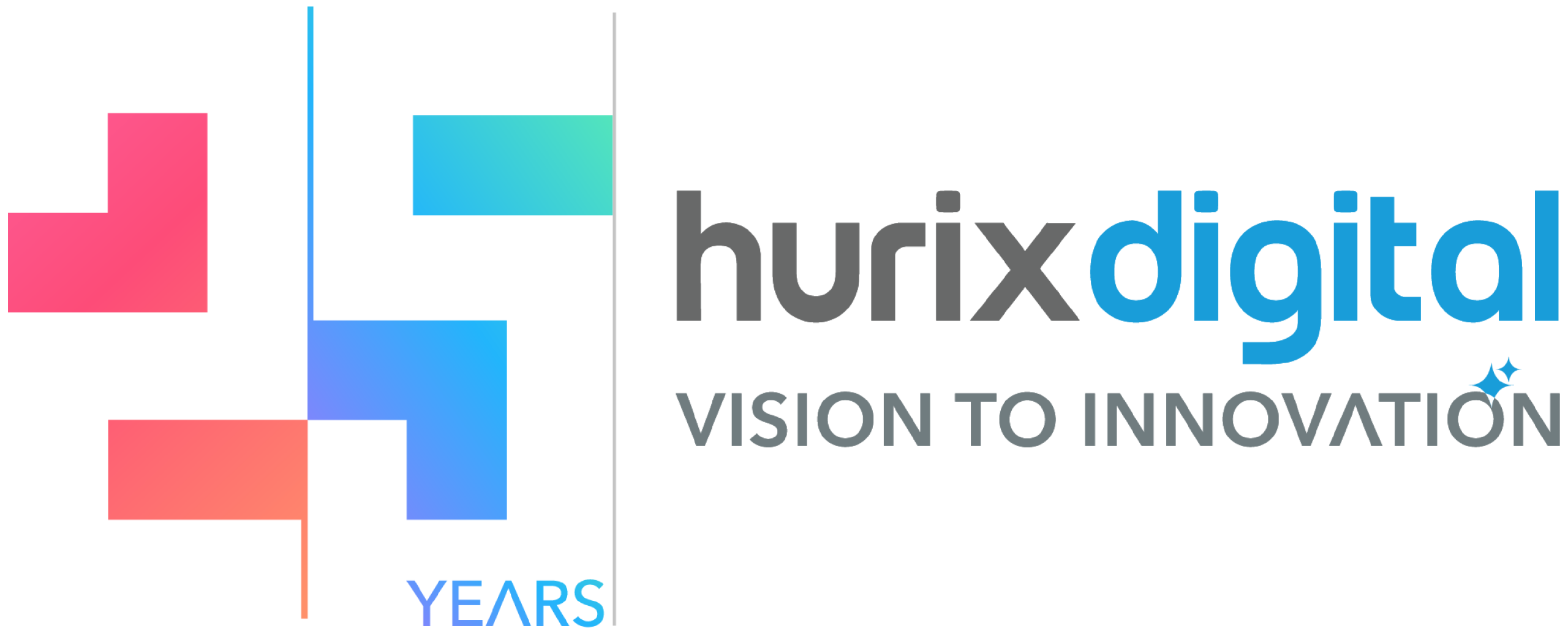
Trust Deficit: Building Employee Confidence in AI-Driven Learning Systems
Trust and artificial intelligence (AI) make uncomfortable bedfellows in the workplace. The new AI systems promise revolutionary learning experiences, but employees are suspicious of them as they are of e-mails starting with the words “Mandatory Training.” The disconnect runs deeper than typical technology resistance. It gets to something pretty basic regarding how human beings learn, grow, and define their professional worth.
Recent workplace surveys paint a sobering picture. More than half of employees worry AI will make their skills obsolete. Nearly half believe AI-driven learning systems collect data that could be used against them in performance reviews. A third suspect is that these tools exist primarily to reduce headcount rather than enhance capabilities. These concerns come from mainstream workforce anxiety rather than fringe technology skeptics. The people expected to embrace AI-powered learning express genuine worries that leaders often dismiss too quickly.
Our latest Learning & Development Maturity Index report reveals an even more troubling pattern. Organizations reporting high AI investment show inverse correlations with employee trust scores. The more companies spend on AI learning systems, the less confident their employees feel about the future. This paradox suggests something beyond implementation failures or change resistance.
At its core, the trust deficit stems from a fundamental mismatch between how AI systems operate and how humans prefer to learn. AI thrives on data, patterns, and optimization, while human learning involves vulnerability, experimentation, and occasional failure. When these worlds collide without careful integration, trust becomes the first casualty.
Table of Contents:
- Why Do Employees Fear AI Learning Systems Will Replace Human Development?
- How Can Organizations Demonstrate AI Enhances Rather Than Replaces Human Connection?
- What Transparency Measures Build Trust in AI Data Collection and Usage?
- When Should Employees Have the Right to Opt Out of AI-Driven Learning?
- How Do Successful Companies Address AI Bias Concerns in Learning Delivery?
- What Role Does Explainable AI Play in Building Learning System Trust?
- How Can Peer Success Stories Transform AI Learning System Perception?
- What Safeguards Prevent AI Learning Data From Impacting Performance Reviews?
- When Does AI Learning System Monitoring Cross Into Surveillance?
- How Do Organizations Measure and Maintain Long-Term Trust in AI Learning?
- Moving Forward With Trust
Why Do Employees Fear AI Learning Systems Will Replace Human Development?
The fear of replacement runs through every conversation about AI in learning, though it rarely gets voiced directly in company meetings. Using advanced AI-powered tools like Dictera, instructional designers watch AI generate training content in minutes that once took weeks. They see chatbots answering learner questions with increasing sophistication. The logical conclusion seems obvious: if AI can teach, why do we need human teachers?
This fear reflects a misunderstanding of AI’s actual capabilities, but also a very real trend in how organizations position these tools. When companies emphasize cost savings and efficiency gains, employees hear “fewer humans needed.” When executives celebrate AI’s ability to “scale personalized learning,” trainers wonder where they fit in a world of algorithmic instruction.
The replacement anxiety intensifies because many learning professionals entered their field specifically for human connection. Creating engaging experiences, reading the room and adapting accordingly, and coaching learners during difficult skill development are roles that seem fundamentally human. Watching AI attempt these tasks feels like witnessing the automation of empathy itself.
Historical precedent fuels these concerns. Employees have watched automation transform manufacturing, customer service, and data processing. Each wave promised to “augment” human workers but often resulted in significant job displacement. Why should AI in learning be different? The burden of proof lies with organizations to demonstrate genuine augmentation rather than disguised replacement.
Reality proves more nuanced than either extreme position suggests. Learning tasks that AI excels at include content curation, progress tracking, and pattern recognition. But it struggles with context, emotional intelligence, and the messy realities of human development. The most effective implementations recognize this division of labor: AI handles the systematic and scalable, while humans manage the complex and contextual.
How Can Organizations Demonstrate AI Enhances Rather Than Replaces Human Connection?
Demonstrating enhancement over replacement requires more than words. It demands visible proof that AI strengthens rather than severs human connections in learning. Smart organizations create compelling examples that employees can see, touch, and experience themselves.
The key lies in reframing AI’s role from teacher to teaching assistant. When a global technology firm introduced AI-powered learning recommendations, they positioned it as “giving trainers superpowers” rather than replacing trainer judgment. Transparency about AI limitations builds trust. In organizations that understand cultural nuance, provide emotional support during career transitions, and inspire through personal experience, employees feel AI cannot replace their worth.
Creating collaborative workflows where AI and humans visibly work together demonstrates daily enhancement. Hurix Digital’s Dictera exactly does that. In Dictera, AI generates initial assessment questions, but human experts refine them for context.
What Transparency Measures Build Trust in AI Data Collection and Usage?
Data collection represents the shadowiest aspect of AI learning systems. Employees know these systems track their every click, pause, and pathway through learning content. What happens to that data? Who sees it? How might it be used? Without clear answers, imagination fills the gaps with worst-case scenarios.
Purpose limitation commitments matter enormously. Employees need guarantees that learning data won’t suddenly appear in performance reviews or layoff decisions. The most trusted organizations create firm barriers between learning analytics and performance management. They commit in writing that AI-collected learning data serves only to improve learning experiences, not to evaluate employees.
Access rights empower learners. Progressive organizations give employees full visibility into their own learning data profiles. They can see what the AI “knows” about them, request corrections, and even opt out of certain tracking. This transparency transforms learners from data subjects to data partners. Regular audits with employee representation verify compliance with data promises. It’s not enough to state policies. Organizations building trust invite employee representatives to review actual data usage. These audits confirm that learning data stays within promised boundaries and that no “mission creep” expands usage beyond original commitments.
The companies achieving the highest trust levels practice “privacy by design” in their AI implementations. They collect the minimum necessary data, anonymize wherever possible, and delete data after defined periods. They treat employee learning data with the same sensitivity as customer financial data. This respect for privacy, demonstrated through concrete actions rather than just policies, builds confidence that organizations value employees as humans, not just data points.
When Should Employees Have the Right to Opt Out of AI-Driven Learning?
The opt-out question creates uncomfortable tension. Organizations invest heavily in AI systems, expecting universal adoption. Yet forcing employees to use tools they distrust breeds resentment rather than learning. Finding balance requires nuanced thinking about when opt-out rights serve both individual and organizational needs.
Mandatory compliance and safety training present clear cases where opt-out could create liability. If AI systems deliver critical safety information or regulatory requirements, organizations reasonably require participation. But even here, alternatives matter. Employees who distrust AI delivery might access the same content through traditional channels, ensuring knowledge transfer without forced AI interaction.
Skill development and career growth learning present stronger cases for opt-out rights. If an employee prefers human mentorship to AI-recommended learning paths, forcing algorithmic guidance seems counterproductive. One of our healthcare clients allows employees to choose between AI-personalized curricula and traditional instructor-designed programs. Interestingly, offering choice increased AI adoption as employees felt empowered rather than coerced.
The timing of opt-out rights matters. Some organizations require initial AI system experience before allowing opt-out decisions. This “try before you deny” approach prevents knee-jerk resistance while respecting ultimate employee choice. Opt-out should not mean exclusion from learning opportunities. Organizations building trust ensure alternative pathways exist for AI-resistant employees. These alternatives might require more effort or time but provide equivalent learning outcomes.
How Do Successful Companies Address AI Bias Concerns in Learning Delivery?
Bias in AI learning systems strikes at the heart of trust. Employees wonder: Does this system favor certain learning styles? Will it stereotype me based on my background? Are recommendation algorithms perpetuating historical inequities? These are not abstract concerns. There are real-life examples of biased AI hiring and performance management systems that make learning-centric concerns all too real.
Addressing bias starts with acknowledging its possibility. Companies that claim their AI is “completely unbiased” immediately lose credibility. Every AI system trained on historical data inherits historical biases. Rather than claiming perfection, honest acknowledgment of reality paradoxically builds more trust. Proactive bias testing demonstrates commitment to fairness. Leading organizations regularly audit their AI learning systems for discriminatory patterns. Does the system recommend leadership training more often to certain demographics? Do completion time expectations disadvantage non-native speakers? These audits, conducted with diverse stakeholder input, surface issues before they impact learners.
One of our manufacturing clients discovered that their AI consistently rated video-based learning as “more engaging” than text-based alternatives. This seemed neutral until they realized it disadvantaged employees with limited bandwidth or hearing impairments. They adjusted the algorithm to weight multiple engagement factors, creating more equitable recommendations across different learning preferences and abilities. Transparency about bias mitigation efforts builds confidence. Organizations should share not just that they test for bias, but how. What methodologies do they use? Who participates in reviews? How do they address discovered biases? This openness transforms bias management from a hidden technical process to a visible ethical commitment.
What Role Does Explainable AI Play in Building Learning System Trust?
The “black box” nature of AI creates fundamental trust challenges. When an AI learning system recommends certain courses or predicts skill gaps, employees naturally ask “why?” Without satisfactory answers, recommendations feel arbitrary or potentially discriminatory. In order to build trust, AI systems must be able to articulate their reasoning.
Explanation doesn’t mean exposing complex algorithms. Employees don’t need lectures on neural network architecture. They need plain-language reasoning they can evaluate. “This leadership course was recommended because you expressed interest in management, your peer group has found it valuable, and it aligns with your stated career goals.” Simple, logical, verifiable. Different stakeholders need different explanation levels. Learners want basic reasoning for recommendations. Learning designers need deeper insights into how content gets selected and sequenced. Administrators require an understanding of aggregate patterns and system behaviors. Successful explainable AI provides appropriate detail for each audience without overwhelming or underwhelming.
The limits of explainability also need acknowledgment. Some AI processes, particularly deep learning models, resist simple explanation. Organizations building trust acknowledge these limits rather than manufacturing false clarity. “This recommendation comes from patterns across thousands of similar learners” might be less satisfying than specific reasoning, but honest uncertainty beats fabricated precision.
How Can Peer Success Stories Transform AI Learning System Perception?
Peer influence outweighs corporate messaging when building trust in AI systems. Employees skeptical of executive assurances often believe colleagues who share similar concerns and experiences. Harnessing authentic peer stories becomes crucial for shifting perception from threat to opportunity.
The power of peer stories lies in their specificity and relatability. Abstract benefits like “enhanced personalization” mean little. But when Sarah from accounting explains how AI-suggested microlearning helped her master Excel functions she’d struggled with for years, colleagues pay attention. When Raj from warehouse operations shares how AI-identified knowledge gaps led to his promotion, peers see possibility rather than peril.
Successful organizations create multiple channels for peer story sharing. Formal venues like lunch-and-learn sessions, where early adopters present their experiences. Informal opportunities through internal social platforms where employees share AI learning wins. We have helped some clients in creating “AI Learning Journals” where volunteers document their journey from skepticism to advocacy.
Lastly, negative experiences deserve space, too. Peer stories that include what didn’t work and how problems were resolved build more trust than universally positive narratives. An organization confident enough to share failures alongside successes demonstrates a genuine commitment to improvement rather than just promotion.
What Safeguards Prevent AI Learning Data From Impacting Performance Reviews?
Perhaps the deepest trust barrier is the fear that AI learning data might influence performance reviews. Employees worry that every mistake in a practice quiz, every repeated module, and every longer-than-average completion time gets recorded and might surface during evaluation periods. This anxiety transforms learning from a safe experimentation space to high-stakes performance theater.
Technical safeguards provide the first defense layer. Progressive organizations implement true data segregation between learning systems and performance management platforms. Not just policy statements but architectural separations that make crossover technically impossible. Policy safeguards require equal attention. Clear, written commitments that learning data remains exclusively for learning improvement need prominent placement. These policies should specify exactly what constitutes “learning data” and guarantee its protection from performance evaluation use.
Audit mechanisms verify safeguard effectiveness. Regular reviews by joint management-employee committees confirm that learning data stays within promised boundaries. For instance, if managers can see aggregate team learning metrics, might they draw performance conclusions? True safeguards prevent even indirect performance assessment through learning data.
Learning sanctuaries are spaces where employees can be vulnerable, experiment, and learn without fear of negative consequences, according to our pioneering L&D report. AI systems operating within these sanctuaries encourage genuine skill development rather than performative completion. Some organizations go further, explicitly celebrating learning struggles. They highlight employees who repeated modules multiple times before mastery, positioning persistence as a strength rather than a weakness.
When Does AI Learning System Monitoring Cross Into Surveillance?
The line between helpful monitoring and invasive surveillance blurs easily in AI-powered learning. Systems capable of tracking every mouse movement, measuring engagement through webcam analysis, or inferring emotional states from interaction patterns possess surveillance capabilities that would make Orwell uncomfortable. Employees rightfully question when helpful becomes harmful.
Proportionality provides a useful framework. Monitoring should match learning objectives, not exceed them. Tracking course completion serves clear purposes. Recording how long someone stares at each screen seems excessive. Purpose specificity matters equally. Monitoring aimed at identifying struggling learners who need support feels different from monitoring to enforce arbitrary engagement metrics. Employees can accept observation that leads to helpful intervention but resist surveillance for its own sake. A clear connection between monitoring type and beneficial outcome builds acceptance.
Transparency about monitoring extent prevents paranoid assumptions. When organizations clearly communicate what they track and what they don’t, employees stop imagining worst-case scenarios. A financial services firm prominently posts “What We Track” and equally important “What We Don’t Track” lists in its learning system. Knowing limits reduces surveillance anxiety.
The surveillance line often gets crossed through feature creep. Systems implemented for beneficial purposes expand their monitoring scope over time. Regular reviews, ensuring monitoring remains within original bounds, prevent this drift. When new monitoring capabilities are proposed, employee input should determine adoption. The question becomes not “Can we monitor this?” but “Should we, and do employees agree?”
How Do Organizations Measure and Maintain Long-Term Trust in AI Learning?
Building trust in AI learning systems is a continuous relationship that requires constant nurturing. Organizations that build initial confidence often struggle to maintain it as systems evolve, leadership changes, or new concerns emerge. Long-term trust requires systematic measurement and deliberate maintenance strategies.
Trust measurement goes beyond satisfaction surveys. While “Do you trust the AI learning system?” provides directional data, behavioral indicators reveal a deeper truth. Do employees voluntarily engage with AI recommendations? Do they honestly report struggles versus gaming completion metrics? Do they recommend the system to peers? These behaviors indicate genuine trust versus compliance. Regular pulse checks catch trust erosion early. Quarterly anonymous surveys specifically about AI learning trust, analyzed for demographic patterns and trending changes, identify issues before they become crises.
Trust maintenance requires continuous investment. Organizations often front-load trust-building efforts during implementation, then assume ongoing confidence. But trust erodes without reinforcement. Regular communications about data protection adherence, visible system improvements based on feedback, and continued celebration of human-AI collaboration success stories maintain confidence foundations.
Leadership consistency critically impacts long-term trust. When executives who championed transparent, human-centered AI implementation leave, their replacements might prioritize efficiency over trust. Organizations maintaining the highest trust levels embed principles in governance structures rather than individual leadership. Despite personnel changes, trust principles become organizational commitments.
Most importantly, trust requires acknowledging when things go wrong. No AI system operates flawlessly. Trust in an organization is antifragile when it admits mistakes, explains how it will fix them, and shows that it has learned from them. Such organizations build trust that is strengthened by challenges rather than broken down by them.
Moving Forward With Trust
Building employee confidence in AI-driven learning systems is not about technical solutions. Better algorithms and smoother interfaces alone won’t solve this. It is a human challenge. Empathy and transparency are essential. Genuine commitment to employee well-being is crucial. Balancing this with organizational goals is key.
The path forward demands recognizing trust as the fundamental currency of successful AI implementation. Without it, even the most sophisticated systems fail. With it, even imperfect systems can transform learning experiences. Organizations that prioritize trust building alongside capability building create sustainable advantages.
Ready for change that lasts? Collaborate with us to turn trust into a growth engine. Get in touch with our specialists now.

Senior Vice President
Julia brings over 20 years of global experience in digital learning and business strategy. She specializes in client success, enterprise learning solutions, and driving growth through innovation, with a focus on AI, VR, and emerging technologies across diverse industry verticals.
 Upcoming Masterclass | Build an Army of Brand Evangelists using Training & Development | November 6th, 8am PT | 9PM IST |
Upcoming Masterclass | Build an Army of Brand Evangelists using Training & Development | November 6th, 8am PT | 9PM IST |



